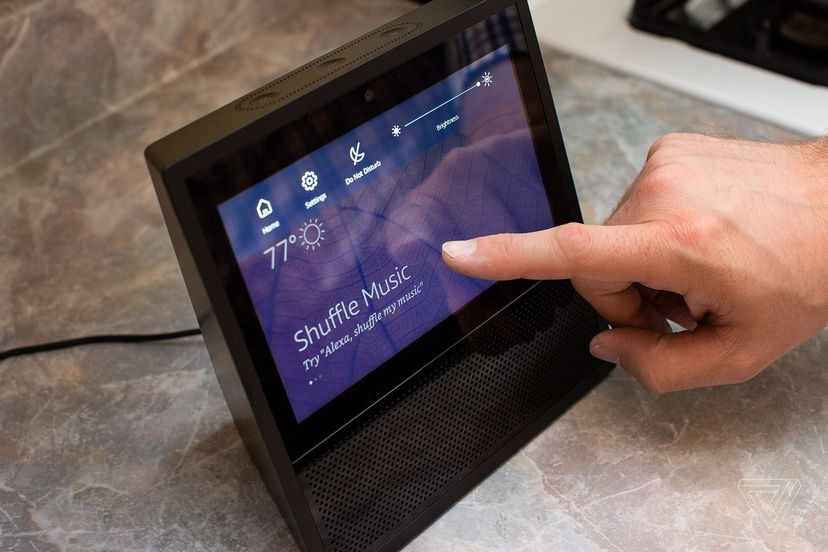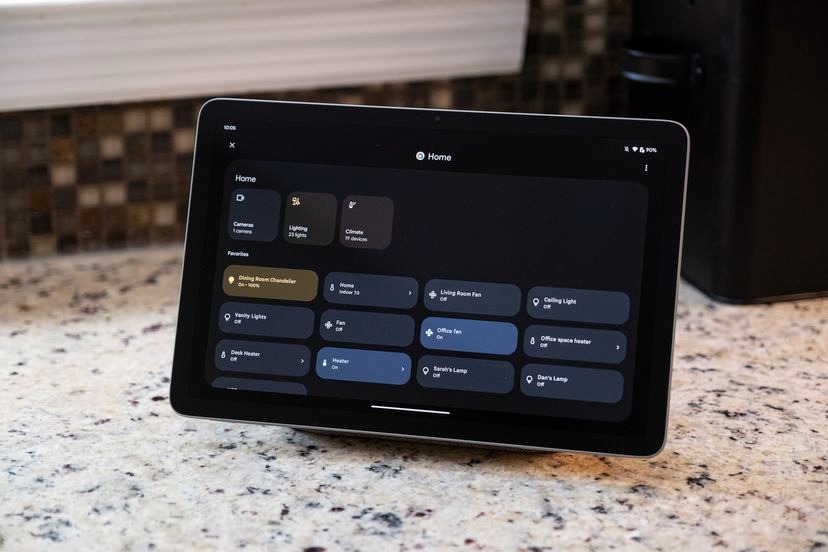The smart home experience faces a persistent challenge: seamless control. Digging through a phone app, struggling with an unresponsive voice assistant, or wrestling with a clunky smart display to manage simple tasks like turning off a light can leave users frustrated, often resorting to traditional wall switches. Apple is now stepping into this space, aiming to address these issues with a new approach that could redefine the smart home landscape.
Reports suggest Apple plans to launch an “AI wall tablet for home control” next year. This smart display is expected to serve as a hub for Apple’s home automation platform, Apple Home, consolidating control of devices such as lights, locks, cameras, and security systems. Beyond automation, the device will reportedly include features like video calling, enhancing its utility as a shared household interface.

Apple’s Reentry Into the Smart Home Arena
Despite introducing Apple HomeKit nearly a decade ago, Apple has largely lagged behind competitors in the smart home market. However, recent developments, including its involvement in the Matter standard—a universal smart home connectivity framework—signal a renewed commitment. Matter simplifies compatibility and reduces costs, making Apple Home more accessible. This pivot appears to align with Apple’s broader search for its next major innovation.
Apple’s rumored first major home-focused product, dubbed the HomePad by Mark Gurman of Bloomberg, tackles one of the most challenging categories: smart displays. These devices, originally conceived as extensions of voice assistants, have evolved into multifunctional gadgets. Unfortunately, they often fall short, overburdened with features like video calls, photo displays, security feeds, and even streaming content, all running on limited hardware and software.
What to Expect From the HomePad
According to Gurman, the HomePad will feature a six-inch square tablet form factor. Users will have the option to mount it on a wall, similar to Amazon’s Echo Hub, or dock it onto a speaker, akin to Google’s Pixel Tablet. Equipped with a built-in security camera and proximity sensors, the device will adjust its interface based on user proximity, a feature reminiscent of the Echo Show 8. Core functionalities will include music playback, video intercom capabilities, security camera streaming, and smart home control.

While these features sound promising, smart displays historically struggle to excel in home automation. Devices like Amazon’s Echo Show and Google’s Nest Hub prioritize voice controls, with touchscreen functionality often feeling like an afterthought. High-end automation tablets, such as those from Crestron or Savant, offer more sophisticated capabilities but require professional programming. Similarly, DIY platforms like Home Assistant offer robust features but demand technical expertise that many users lack.
The Opportunity for Apple
Apple’s potential lies in its ability to simplify complex technologies. The company is known for intuitive interfaces that transform user experiences, as seen with iOS, tvOS, and watchOS. For the HomePad to succeed, Apple must combine voice and touch control in a way no other smart display has achieved. This could involve contextual interactions, such as saying, “Siri, turn on the lights,” while the display simultaneously offers touch controls for further adjustments.
One of Apple’s key advantages is its focus on local control within its HomeKit framework, minimizing reliance on cloud connectivity. This differentiates it from Amazon and Google, whose systems often depend on external servers. By leveraging Matter, Apple can immediately connect the HomePad to a wide range of smart devices already in users’ homes, enhancing compatibility and reducing barriers to entry.

The Role of Siri
However, Apple’s biggest challenge lies with Siri, its voice assistant. While capable of handling basic commands, Siri significantly lags behind Amazon’s Alexa and Google Assistant in smart home integration. For the HomePad to deliver a groundbreaking experience, Siri must evolve to provide contextual understanding. For instance, instead of responding to “adjust the thermostat to 68 degrees,” Siri should interpret statements like “I’m cold” and take appropriate actions based on the user’s location and settings.
Reports suggest the HomePad will run a new operating system, homeOS (codenamed Pebble), based on Apple TV’s tvOS. The interface will blend elements of watchOS and iPhone’s StandBy mode, with voice expected to play a central role. The system will utilize App Intents, enabling advanced AI-driven control over applications and tasks. While promising, Siri’s current limitations highlight the need for significant upgrades to handle complex interactions.
Challenges Ahead
Apple reportedly plans to introduce a more advanced, conversational Siri powered by large language models (LLMs), but this update isn’t expected until at least 2026. Competitors like Amazon and Google are also working on similar enhancements, but none appear close to widespread implementation. These advancements face hurdles, including legacy code, millions of existing devices, and the challenge of integrating new AI capabilities without disrupting current functionality.
Apple’s history of taking a measured approach to emerging categories—drawing inspiration from successful products and refining them—could work in its favor. However, the stakes are high. Simply borrowing ideas won’t suffice; Apple must deliver an intuitive interface and a smarter Siri to meet consumer expectations.
The Road Ahead
If Apple can master the integration of voice and touch in a seamless, user-friendly manner, it has the potential to redefine the smart home experience. With devices like the HomePad, Apple could set a new standard, making smart home control more intuitive and accessible. The task is daunting, but the demand for a better solution is clear. If any company can “just make it work,” Apple might be the one to deliver.
